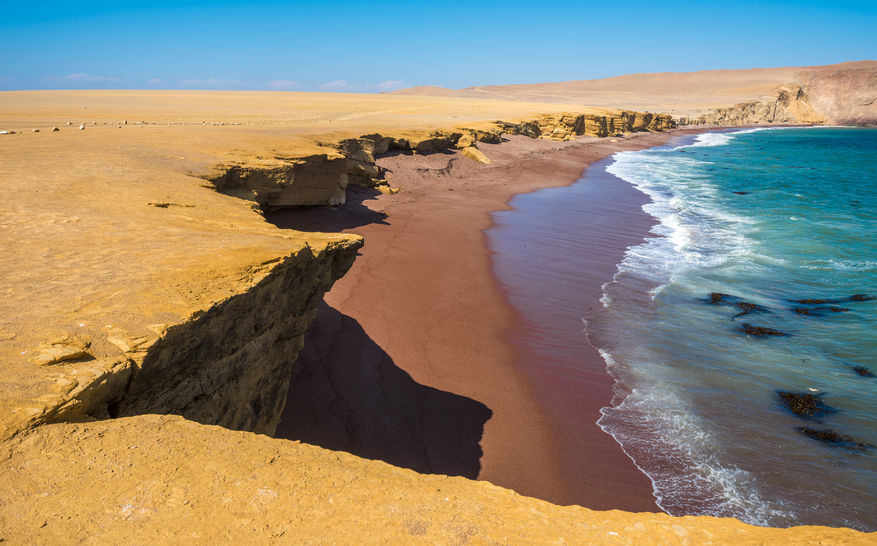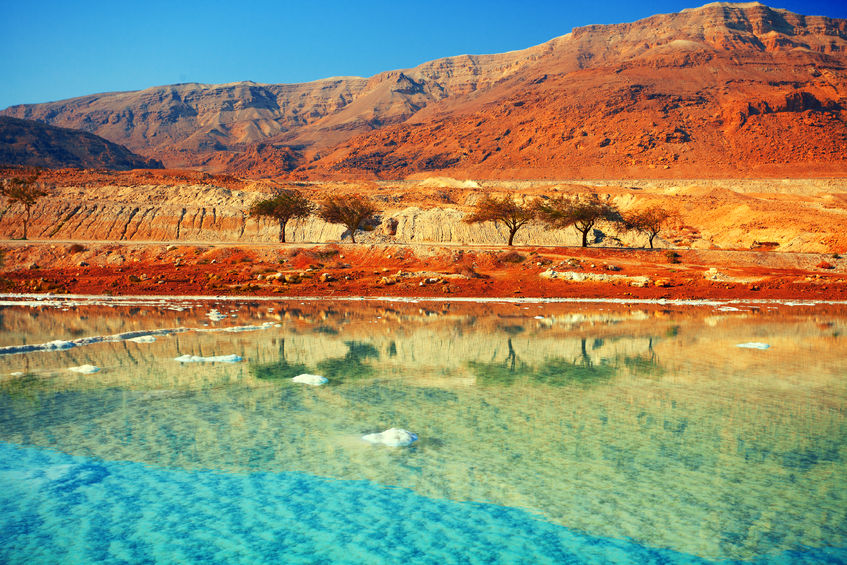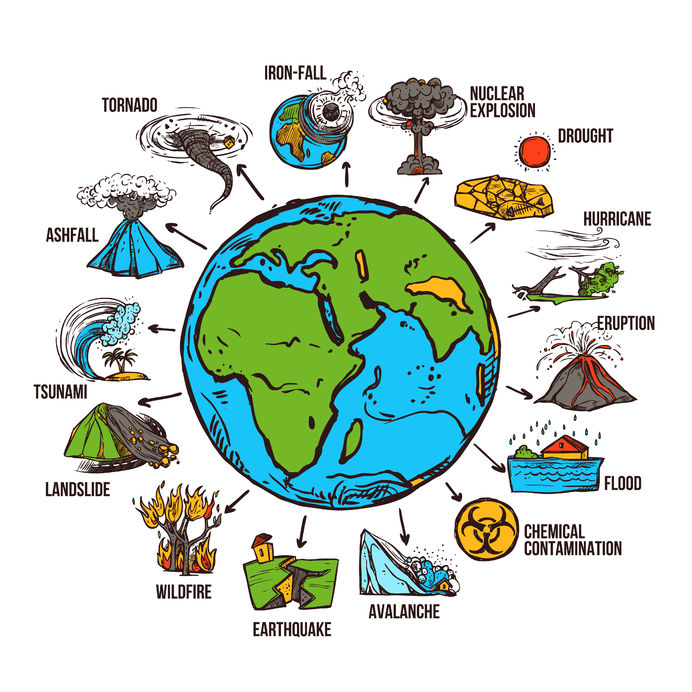Coastal deserts share many features which are common to all type of deserts. The amount of rainfall is very low as compared to any other places on earth. As a result, fresh water is lacking most of the time, except when it comes from other humid region through the river or with underground flow.
The Dry stream channels can be filled to flood levels over a long period of time and by run-off from a few rainstorms. The vegetation is also spare or lacking, except some ephemeral plants which spring up after a rain and with their long roots, they can take underground water which is near to the surface. Woody shrubs in localities concentrate the near base of the slopes. Due to lack of protective cover provided by the plants, the earth is exposed to action of the sun and wind.
In some of the places where the surface is swept clear of loose sand and slits, which leave a pavement of bare rock or loose stones,. Other than that, the wind has piled the sand into sand dunes.
The soil in which the sand dunes or merely stones are not present often suffers from the concentration of salts. Poorly drained depressions are common where water accumulates after rain, which leads to the formation of temporary or even permanent lakes, which never fill enough to have an outlet and are highly saline. Some problems of land utilization are also similar in the other deserts.

Agriculture is being carried only by the means of irrigation and is confronted by problems of alkaline soil. Grazing can possible
Alkaline soil poses a problem for agriculture and necessitates irrigation. Grazing, if possible at all, is meager, depending chiefly upon erratic rainstorms for temporary forage (aches), leaves of phreatophytic trees and shrubs, or slope-foot run-off brush. Lack of wells proscribes the use of some areas, even where there might be enough forage to justify grazing. Mineral wealth, if sufficiently rich, may induce settlement despite the need for costly measures. Provide fresh water.
The justification for dealing with the coastal deserts as a separate category, however, lies in the fact that they have certain distinctive qualities not shared by inland deserts. These unique qualities are related to the proximity of the sea. The climate over the land is modified by the adjacent sea.
Places near the coast have smaller temperature differences between night and day and between winter and summer than those farther inland because water heats and cools much more slowly than land. Along some of the west coast deserts, the coast is so much cooler than the interior in summer that crop possibilities are affected; dates, for example, do not receive enough heat for proper growth near the west coast of the Sahara.
Where there is strong on-shore wind, as on the west coast deserts outside of the tropics, the sea effect is naturally much greater than where winds blow from the land, though on nearly all coasts there is a tendency for a sea breeze to spring up during the day and give some relief from the heat for a few miles inland. Similarly, atmospheric humidity, fog, and dew are more common along the coast than inland.
In some cases, this non-pluvial moisture is sufficient to support some plants that could not grow in drier, hotter areas, and may permit better grazing near the coast. One great category of resources of the coastal deserts is totally lacking in most interior deserts: the resources of the sea itself.
In traversing the desert coasts one is impressed by the ubiquity of the small fisherman, and the fair abundance of large-scale fishing. The very earliest inhabitants of some of these areas were the clam-diggers and other gatherers of shellfish: an economic type requiring in its simplest form but little skill or capital.





